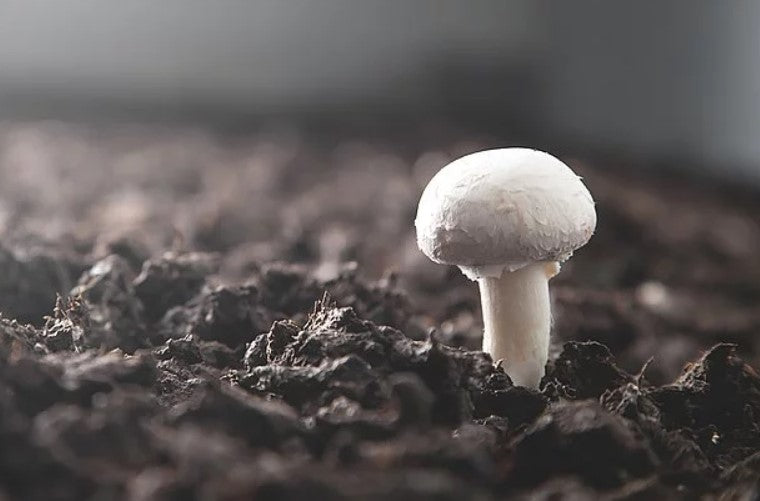
Choosing the Right Sterile Substrate for Your Mushroom Species
08/07/24Share
Mushroom cultivation is rewarding and challenging at the same time. It requires a deep knowledge of mushroom cultivation to ensure successful growth. A crucial component of cultivating mushrooms is in selecting the right substrate. Learn about the best substrates if you want to achieve optimal mushroom growth.
What is a Mushroom Substrate and How to Grow It?
A mushroom substrate is like soil to plants. It is a substance where you grow mushrooms, which provides them with nutrients to grow. The main difference between growing mushrooms is that they do not go through the process of photosynthesis. Instead, the mushroom substrate decomposes until it becomes an organic material that nourishes mushrooms to facilitate a healthy, sustained growth.
The characteristics of a good mushroom substrate is that it should be rich in organic matter. The most common ingredients used for a substrate can be a mixture of any of the following: grains, wood chips, coffee grounds, and manure. The exact substrate mixture will depend on the specific mushroom species you are growing.
Urban growers use various types of mushroom substrates for different mushroom species. Therefore, the first step in choosing the right substrate for growing mushrooms is to identify what species you want to grow.

What to Look for in a Mushroom Substrate?
You should learn to identify the qualities of a good mushroom substrate to ensure it matches the specific requirements for the specific species. Here are things to consider when choosing a sterile substrate.
Water Content
The ideal substrate is critical in growing healthy mushrooms, regardless of the species. You need 70 to 90% of water content in the substrate to produce enough humidity for mushrooms to grow. It creates the ideal environment for mushrooms to grow, which prevents them from drying out. It is crucial for a mushroom substrate to retain moisture, so having at least 70% of water content is important.
Woody, Fibrous Components
Aside from water, the right sterile substrate for mushrooms must have woody and fibrous components. It serves as the primary food supply for the mushrooms. Sawdust and straw are the most common types of substrates that meet this requirement. Explore other types of substrates with woody and fibrous components depending on the mushroom species.
Nutrients
A good substrate must have adequate nutrients to nourish the mushroom as it grows. Magnesium, calcium, potassium, phosphorus, and sulphur are among the most important nutrients required in a substrate. You can find these minerals in much raw and organic matter, but it depends on where you get your substrate material from.
Air Exchange
Maintaining proper air flow is critical in a healthy substrate for your mushrooms. It is important to help your mushrooms to colonize effectively.
Acidity
The ideal substrate should have an acidity level of 5 to 6.5 It depends on your mushroom species, but there are some that can withstand up to pH 8.
Lack of Competing Organisms
Just as you need to pull out weeds from the mushroom substrate, you have to ensure there are no competing organisms within the substrate. Otherwise, your mushroom species will not be nourished as it grows. Give it a clean slate for healthy growth.
Choosing a Mushroom Substrate According to the Species
Use this guide to find the best combination of substrates for the specific mushroom species you want to grow.
Shiitake Mushroom
For this mushroom species, the ideal substrate consists of hardwood sawdust to provide the best environment for mycelium growth. Adding calcium carbonate provides the right pH stability and bran supports fruiting and development with adequate nutrients.
Oyster Mushroom
Straw is an important base for the mushroom substrate for oyster mushrooms because it creates the right structure. You also need sawdust to facilitate moisture retention and to supply it with proper nutrients. And if you need to balance the pH level, you can add gypsum.
Lion’s Mane Mushroom
The best mushroom substrate for lion’s mane mushroom is oak. It provides structure and nutritional content for healthy mushroom growth. Adding soybean hulls to the substrate boosts water retention for sustained growth.

Dung Loving Mushroom
A dung loving mushroom requires a substrate that offers good nutrients and that can retain moisture, so coco coir is a good option for this. Vermiculite is recommended to promote good airflow to the substrate. The addition of gypsum maintains the aeration and pH level for growing this mushroom species.
Deciding between a single or blended substrate depends on various factors. There is no one-size-fits-all solution because it depends on the mushroom species and the goals of the grower. The first consideration is the scale of the mushroom cultivation. Single substrates are cost-effective and sufficient for small-scale mushroom cultivation. However, mixed substrates are suited for large-scale cultivation.
The risk of contamination is another factor to consider. Using multiple substrates reduces this risk, which helps to mitigate any loss from your crops. And of course, it is important to choose the substrate based on the mushroom species. You must research the species you are growing and their requirements to find the best substrate to facilitate its growth.
Importance of Choosing the Right Mushroom Substrate
The mushroom substrate should provide a sterile and healthy environment for mushrooms to grow. It is vital that you choose a substrate that is appropriate for the mushroom species.
With the right substrate, your mushroom can enjoy these benefits:
- Boosts mycelial colonization
- Maximizes yields
- Achieve adequate moisture
- Improves fruiting and development
Aside from having the right substrate, make sure to supplement it to boost the nutritional content of the substrate and facilitate a healthy environment for growth.
Gypsum is a popular supplement because of its capacity to improve the water retention of the substrate. It is also a good source of calcium and sulfur. On the other hand, wheat bran is ideal for mushroom species that require a higher nitrogen content.
Conclusion
With this guide, hopefully you’ll be able to build the right mushroom substrate for growing healthy mushrooms. It starts with choosing the right substrate for your mushroom species, preparing the substrate, and supplementing it to ensure you can enjoy the benefits listed above. Don’t forget to sterilize the substrate to allow your mushrooms to thrive.
